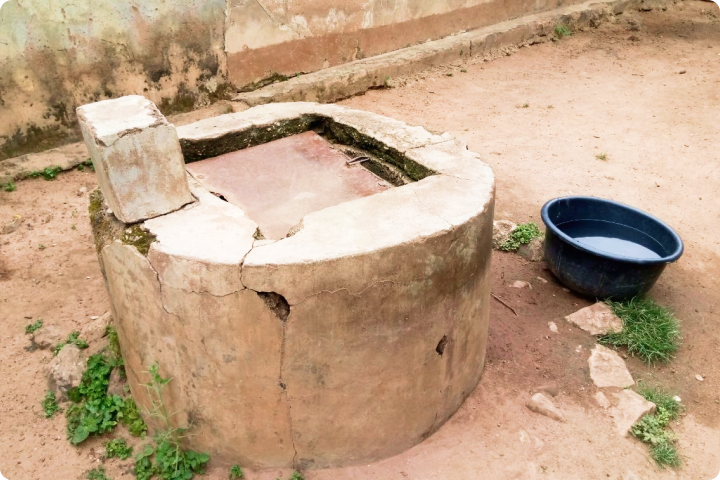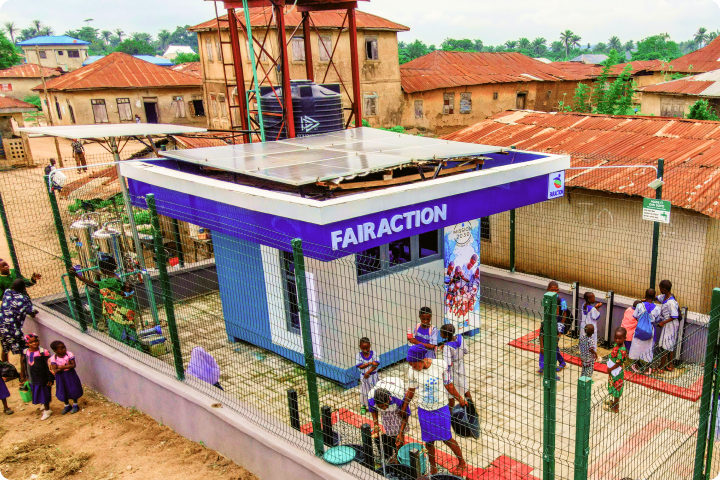Why Water Projects Fail – and How Fairaction Is Building the Fix That Lasts
Every year, millions of dollars are spent on rural water projects in Africa, but more than 35–50% of these fail within just 2–5 years due to poor planning, lack of maintenance, and tech mismatch. Boreholes dry up. Pumps break. Communities are left to return to unsafe streams and wells.
But one water charity organization in Africa, Fairaction, is doing things differently. Based in Nigeria, this smart, community-focused water charity is proving that real, long-term water sustainability is possible. Its data-driven and community-owned solutions can deliver real water security where it’s needed most.

In a groundbreaking 2023 study published in Water Policy, Fairaction founder Sam Adeoti and colleagues reviewed 15 global studies and uncovered 265 unique failure factors for rural water projects. These were grouped into six domains:
Technical
Financial
Institutional
Environmental
Politica
Social
The takeaway? Water failure is multi-dimensional, and solving it requires more than drilling a borehole.
These findings prove that no single intervention can “fix” water access. If we want truly sustainable water solutions, we need systems built for the long run, locally informed, real-time data, and smart planning.
Fairaction’s Framework: Built to End Water Poverty
Using transdisciplinary doctoral research, Adeoti’s team, through Fairaction, developed a practical sustainability framework that addresses the full life cycle of a water project, spanning:
Pre-construction mapping & assessment – Deep, community-level diagnostics that reveal where water is most needed and why.
Construction – Smart Water Kiosks (SWKs) powered by solar energy and embedded with IoT sensors to enable real-time monitoring and diagnostics.
Post-construction – Continuous monitoring, modest pay-per-use fees set in consultation with the community, and local capacity development for maintenance and ownership to ensure projects don’t drop off the radar.
This model is refined through a cycle of piloting, learning, and iteration; constantly improving to solve real-world problems, while tackling all 265 failure drivers, something most water donation organizations overlook.

Precision Mapping: The Foundation of Smart Design
Mapping efforts spanned over 1,700 rural communities across three Nigerian states, highlighting the shortcomings of state-level poverty data. Precision data revealed who lacks water, why, and how to tailor interventions – from groundwater access to social dynamics, and to local needs.
Examples of such communities are:
These have been found to have deep water needs that weren’t showing up in typical available data. Therefore, sustainable water projects in Nigeria must be shaped by real data, not assumptions. By pinpointing such “hidden water deserts,” Adeoti’s team designed solutions suited not just to the terrain, but also to the cultural and economic realities of each village.
Fairaction’s Smart Water Kiosks: Technology Meets Local Realities
Fairaction’s Smart Water Kiosk Nigeria model is changing the game. These kiosks are tailored to meet the everyday needs of rural communities.
Solar-powered systems and pumps that require no fuel or grid access, tapped from renewable energy sources.
IoT sensors that track performance, water flow, and revenue in real time.
Pay-per-use model charging about ₦800–₦1,000 ($1 USD) per 1,000 litres, which sustains operations and builds a repair fund.
Community ownership structures and oversight where local women and youths are trained as operators and maintainers, achieving 96–100% uptime.
By integrating technology with community training and modest user fees, these kiosks overcome the “install-and-forget” fate of most rural water projects run by typical water donation charities.
From Red to Green: Avoiding Aid Overlap
A key twist: coordination matters. When NGOs or politicians install free boreholes next to paid kiosks, the kiosks often lose users and fall into disrepair, while the free systems collapse from neglect.
Using a shared Target 6.1 Map, communities, funders, and policymakers can visualize which facilities are working (green), at risk (yellow), or broken (red). This prevents duplication and ensures sustainability, not redundancy.
Why This Matters (and How to Scale)
Affordability meets sustainability: modest fees fund repairs, not donor dependency.
Holistic design works: only multi-dimensional interventions survive long enough to matter.
Transparency builds trust: real-time data demystifies water system performance and encourages accountability.
Policy must adapt: mapping, coordination, and built-in maintenance plans should be mandated for all future Clean Water Charity Australia and global projects, otherwise SDG 6.1 remains aspirational.
This isn’t donor fantasy, it is evidence-based policy. Smart kiosks in communities like Abeku, Isale‑Oja, and Alabata have shown sustained performance for years through this partnered approach.
The Big Picture: A Blueprint for SDG 6.1
To reach United Nations SDG 6.1: safe, affordable water for all by 2030, we must ditch short-term fixes in favor of smart design, informed by community voice, data insights, and economic viability. That’s where smart water management systems come in. Fairaction is exactly what's building in Nigeria, an effort that global water donation organizations and Australian water charities can learn from and support.
Key takeaways for stakeholders:
Step | What to Do |
1. Map & Assess | Understand local conditions, not just state averages. |
2. Design Smart | Build solar‑powered, sensor‑equipped kiosks with the community |
3. Fund Maintenance | Charge small user fees and raise funds to support upkeep |
4. Coordinate Aid | Share data through platforms like Target 6.1 to prevent aid |
5. Policy Reform | Require mapping and sustainability in all water projects. |
By combining technology, community, and policy, Fairaction’s framework isn’t just breaking cycles; it’s offering a replicable model for delivering resilient water systems across Africa.

Be Part of the Solution
Infrastructure fails when we treat water as a one-off gift instead of a long-term partnership. With 265 failure factors mapped, smart kiosks piloted, and a clear policy roadmap established, Nigeria’s innovations can be the blueprint for global impact.
Do you work in water policy, rural development, or impact investment? Let’s explore how this model and platform can be scaled to achieve universal water access before 2030.
Your support can help bring clean, safe water to more underserved communities. Every donation goes directly toward building and sustaining Smart Water Kiosks, training local operators, and expanding real-time mapping to prevent future water failures. Donate to a water charity that’s building for the future. With as little as $10, you can help provide over 10,000 liters of life-saving water to families in need.
Let’s move from short-term aid to lasting impact. Donate to Water Charity Nigeria through Fairaction and help turn water poverty into water justice, one village at a time. Be the change that brings clean water to the communities.